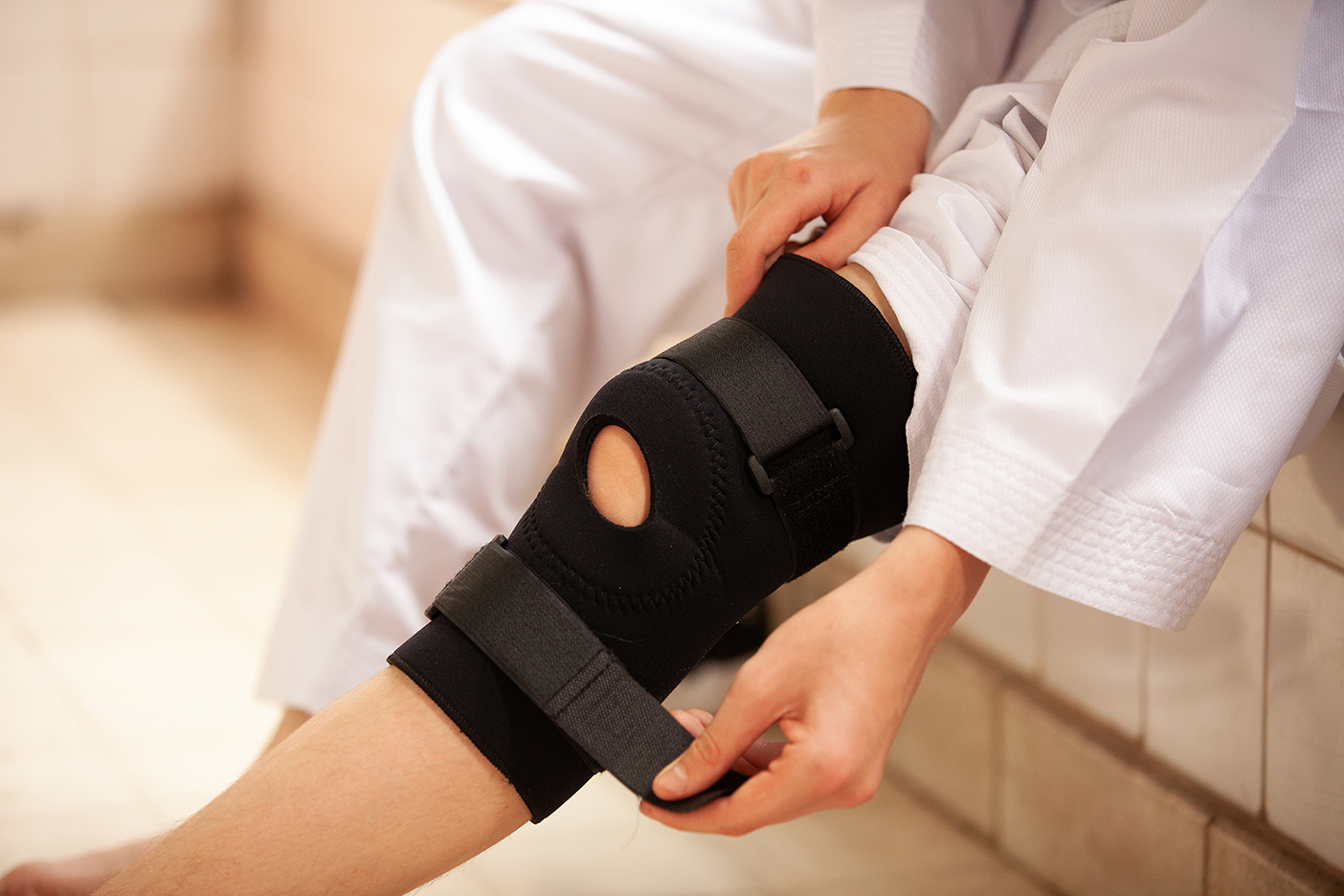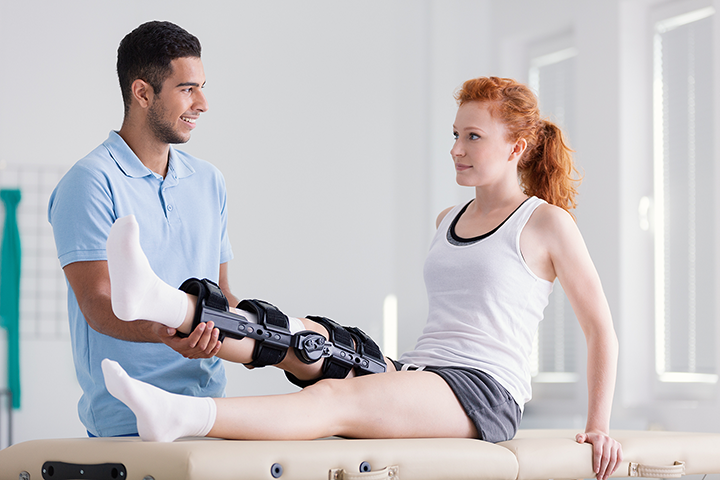
The human body is made to move, and this movement is made possible by various types of joints. One of those joints, the knee, receives 80% of your body weight as you move. The knee’s hinge-like structure allows for bending and rotating movements, but because of this and the amount of weight it bears, your knee joint is prone to many injuries, such as tendonitis, muscle sprains, ligament tears, and many more.
If you’re suffering from knee pain, you may want to use a knee orthosis. Also known as a knee brace, these devices can help support the ligaments that hold the joint together. Typically, patients will use a knee orthosis after undergoing knee arthroplasty - the surgical reconstruction of the knee. This knee support equipment can significantly help with your recovery, and may help prevent your injury from getting worse as well as decrease inflammation and pain.
In this article, you’ll learn more about the different types of knee braces, and what each type does. You’ll also learn how to maintain and clean your knee brace.
Types Of Knee Orthotics

These are the general types of knee braces that you may encounter, depending on your needs. Each individual type of knee orthotic has its own specific purpose:
- Prophylactic Knee Brace
This type of knee brace is typically used in preventing injuries in knee ligaments. For people who already have injuries, this type of knee orthotics may aid in reducing the severity of the condition. By helping reduce knee stresses, a prophylactic knee brace protects your medial collateral ligament or MCL. Prophylactic knee braces are also used to prevent knee reinjury.
Prophylactic knee braces are often used by athletes who are active in contact sports such as various forms of football (soccer, rugby, Australian rules or union).
- Functional Knee Braces
Functional knee braces are typically used to provide support and maintenance to an already injured knee. Such injuries can be the result of falls, accidents or playing sports.
This type of knee brace may also be used for decreasing the rotation of the knee after you’ve undergone an anterior cruciate ligament (ACL) injury. By aiding stability in knee ligaments, functional knee orthotics may enable individuals to remain mobile in daily life.
- Rehabilitative Knee Brace
This type of knee brace restrains movements that might be harmful to the knees. People currently undergoing recovery from surgery typically use this type of knee brace. You can also use rehabilitative knee braces for the prevention of recurring injuries.
- Unloader Knee Brace
Unloader or offloader knee braces work by providing relief for knee arthritis . Specifically, unloader braces are used by people with medial compartment knee osteoarthritis. The knee brace works by unloading any stress from the joint and redirecting it to the thigh bone, hence the name “unloader”.
If you’re scheduled for knee replacement or surgery and are looking to take away some stress from the knee, then you can use this type of knee orthotics.
Choosing The Right Knee Brace
Now that you know the different types of knee braces, you should also learn about the main factors to consider when choosing the type of knee brace right for you. Taking note of the following considerations will help you choose the most suitable knee brace for your needs:
- Parts Of The Knee
It’s important to know that different types of knee orthotics help different parts of the knee. For instance, if you have a dislocated kneecap, you need a completely different brace from someone with a torn ligament.
There are numerous ligaments and tendons located in the knee, all of which are prone to trauma or tearing. Each of these ligaments or tendons requires its own kind of support during recovery.
It’s important to carefully identify what the specific issue is that might be causing your knee pain . From there, you can choose which medical knee brace to use. After getting your doctor’s diagnosis, you can then proceed to look for an appropriate knee brace.
- Extent Of Your Activity
You should also consider your day-to-day activities when looking for a knee brace. This is crucial in picking the correct brace to use. If you’re involved in a high-impact sport, you need a different type of brace than someone who leads a more sedentary lifestyle. The same goes for people with osteoarthritis.
Cleaning And Maintaining Your Knee Orthotics
Choosing the right knee orthotics is vital, but if you want to get the most from it, you should also know how to care for your brace properly. It’s essential to keep your braces clean. Medical knee braces tend to be costly, so you definitely want to take care of them and extend their life as long as possible.
Not cleaning your knee braces properly may also lead to your brace developing an unpleasant smell. This, in turn, may result in further health issues such as ringworm, staph infections, and many more. If this is your first time getting a knee brace, then you should know some basic pointers on cleaning and maintaining your knee brace:
- Clean It frequently
Since your knee brace is always touching your skin, thorough and frequent cleaning is necessary. To clean your brace, you can use a washcloth and mild soapy water.
If you have a knee brace with removable pads, try handwashing it with a mild soap or detergent. Make sure to rinse and air dry the brace properly.
- Dry Before Using
Remember that you should have eliminated all soap residue and that it’s completely dry before using your brace. You may use a hairdryer to dry your brace. Just make sure you keep it on a cool setting.
- Don’t Let Saltwater Stay
If your knee brace has been exposed to saltwater, wash it immediately.
- Avoid High Temperature Exposure
You should avoid exposing your knee brace to sweltering temperatures. Don’t put your brace directly under the sun or leave it inside a closed car.
- Use Lubricants
Don’t be afraid to use lubricant if you hear creaks in the brace.
- Check For Signs Of Wear And Tear
Be mindful of wear and tear. Have your brace professionally repaired immediately if you see any signs of damage. That way, you can save your brace before it’s beyond repair.
Conclusion
The knee joint is an essential part of the human body. That’s why it needs a lot of help and support from you, especially if you have knee injuries. The prevalence of knee injuries has resulted in a growing number of medical developments to help restore function to damaged knees. For now, you can utilise knee braces to help support you in your daily activities. Not only do knee orthotics assist in the recovery of your injured ligaments, they also stabilise and reinforce other parts of the joint, ensuring your knees remain in working condition.